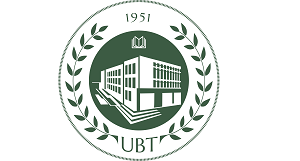SULEJMAN SULÇE1*, EVAN RROCO1, JAMARBËR MALLTEZI1, SEIT SHALLARI1, ZAMIR LIBOHOVA2, SOKRAT SINAJ3, NIKOLLA P. QAFOKU4
1Agriculture University of Tirana, Kodër -Kamëz, Agronomy Building no 7, 1019 Tirana, Albania.
2USDA-NRCS National Soil Survey Center, 100 Centennial Mall North, Federal Building, Room 152. Lincoln, NE USA 68508.
3Agroscope, Institute for Plant Production Sciences (IPS), Route de Duillier 50, P.O. Box 1012, 1260 Nyon, Switzerland.
4Pacific Northwest National Laboratory, Richland, WA 99352, USA
*Corresponding author e-mail: sulejmansulce@yahoo.com
Abstract:
Albania is a country rich in freshwater resources, both surface and ground waters, but the water quality has deteriorated significantly over the last several decades. The objective of this paper is to present a general overview of the issues related to the surface and ground water quality in Albania and discuss about sources and controlling processes. The sources of metal and organic contaminants are: i.) Many oil industry severely contaminated, abandoned or operating sites; ii.) Cr, Ni and Cu mines, mainly in the north; and iii.) Old processing factories. The sources that contribute to the high concentrations of N and P are: i.) A growing number of fertilizer and pesticide storage facilities (ten of them are considered “hot spots” and significant sources of N and P); ii.) Other identified point sources, industrial or urban; and iii.) Urban liquid and solid waste; the vast majority of residential areas with more than 5,000 inhabitants have no wastewater treatment plants, and the waste waters are directly discharged into rivers or the Adriatic and Ionian Seas. It is estimated that these sources supply up to 20% of the N and P transported to water collection basins. Another important contributing factor to pollution of waters in Albania is erosion. The erosion rate, varying from 1 to 30 t ha-1 yr-1, is the highest in the southeast Europe. The high erosion rates are mainly due to the lack of soil vegetative cover and poor natural resources management practices. Especially over the last two decades, the soil vegetative cover has been removed due to massive uncontrolled deforestation, mainly the result of lack of enforcing forest protection laws and policies. In addition, abandoned agricultural lands and overgrazed pastures at higher elevations have rare vegetation and the agricultural land-use management practices are outdated. In conclusion, we propose that systematic research efforts should be conducted to: i.) Document all sources of water contamination and types of organic and inorganic contaminants; ii.) Quantify amounts and fluxes of contaminants from sources to surface and ground waters; and, iii.) Determine the best research based remedial strategies to remove contaminants from waters and decrease risks to humans and wild life. In addition, adequate rigorous and continuous monitoring to determine potential risks to aquatic ecosystems should be established and implemented throughout the Albanian territory. Monitoring plans for integrated transboundary waters should be regularly updated and a comprehensive database on water pollution should be created and maintained.
Keywords: Water quality; water pollution; surface water; groundwater; Albania; erosion; erosion rate.

